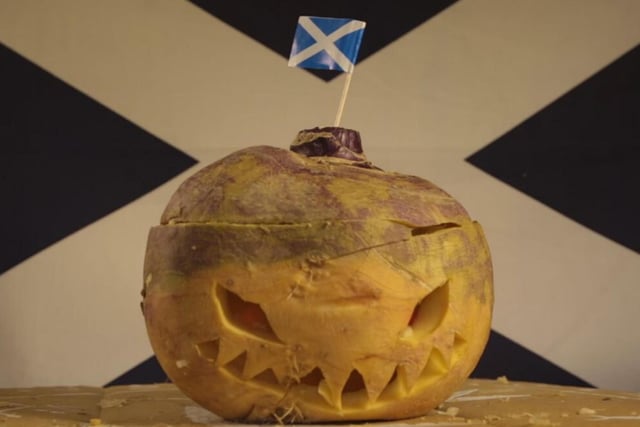The Scots tradition of carving a ghoulish tumshie (neep) lantern for Halloween is a fading art but is it time we patched the pumpkins and gave the humble neep the stage it so deserves?
As the last batch of tickets for a new neep picking patch, Lidl is on a mission to do just that. Free for kids and just a fiver for adults, the fun day out aims to take family fun back to its roots.
Ahead of its three-day event, food historian, Peter Gilchrist shares 10 things you might not know about the history of neeps in Scotland.
Neep, turnip or swede? Neep is actually old English for softer and smaller turnips but began being interchangeably used to describe swedes when they arrived in Scotland in the 18th century.
Swede was first grown in Scotland as animal feed but when the potato famine plunged many families into destitution, they became a household staple.
For crofts across the Lowlands and Highlands, it was popular to have a ‘house cow’, which were commonly fed food waste from the kitchen including neep peelings & cores.
It’s widely claimed that neeps allowed farmers to feed cattle long into winter, which allowed (previously seasonal) beef to become available year-round.
A 1903 court case saw teenage boys charged with destroying a neep patch in Glenrothes - notable because the prosecutor didn’t recognise the term ‘tumshies’ in the trial.
They faced a two shilling and six pence fine and two days in prison.
The first published recipe in Scottish literature is for an earthy candied turnip but, historically, Scots would largely have boiled it whole for 1.5-2 hours.
In the 19th century, Hallowe’en transitioned into a festival for bairns with popular activities including carving neeps into ‘tumshies’ as well as creating kale runt torches.

Swedes would traditionally have been harvested between June and September and stored for later in the year - by Halloween, they would have been softer and potentially easier to carve than your modern-day tumshie lantern.
Speaking on our latest Scran podcast, Peter explained that the lack of these softer swedes is why we’ve all found it so hard to carve a neep lantern in the past. He said: “In 1620 the Swedish turnip was discovered and it came over to Scotland in the 1790’s.
"When it comes over, they’re used as animal feed as they can be stored well and don’t rot. At this time we have a transfer from carving small, soft turnips to carving Swedish turnips as there would be no waste as they’d be fed to the animals anyway.
“Turnips were harvested and left for a month or two before being carved for Halloween. Some time, around four generations ago, people started buying Swedish turnips, swedes, from supermarkets, and then pretended you’d be able to carve them with a knife.
"I don’t think that Swedish turnips were meant to be carved in this way. Every year we say ‘they’ve been carved for a thousand years like this’ and they really haven’t. It’s a bit like the emperor’s new turnip.”
He had this advice: “microwave your turnip a bit to make it softer and easier to carve.”
If TikTok had been around in the 1800s, we’d have Scotland’s favourite son to thank for getting ‘neeps’ trending.
Haggis, neeps and tatties became popular in Burns Suppers, further cementing Rab as a pioneer of popular culture.
Screaming swede
Nowadays, it’s diet conscious Scots helping neeps go viral with a popular ‘screaming swede’ microwave hack.
Kicking off this Saturday (12 October) at Chatelherault Country Park, the three-day event is free for kids under 11 and just a fiver for adults with final remaining tickets available online.
Longstanding Lidl supplier, Stewarts of Tayside, grows a momentous 50 million neeps every year and is harvesting a special crop for Lidl’s pop-up patch. All proceeds will be donated to STV Children’s Appeal.
